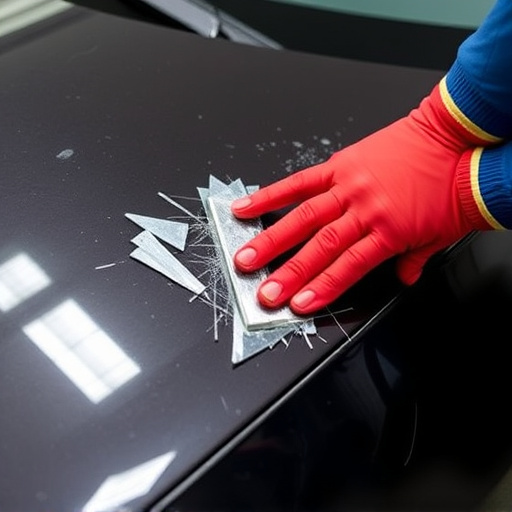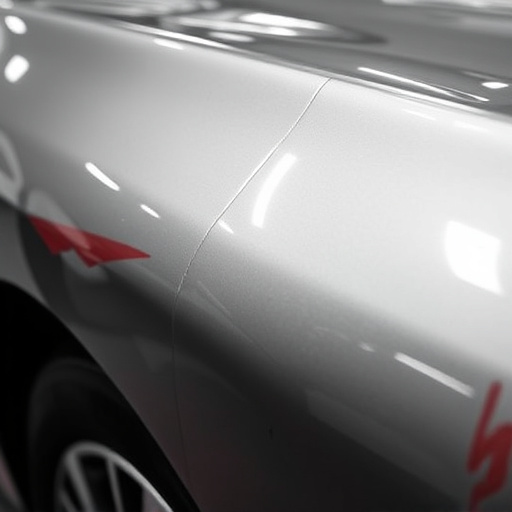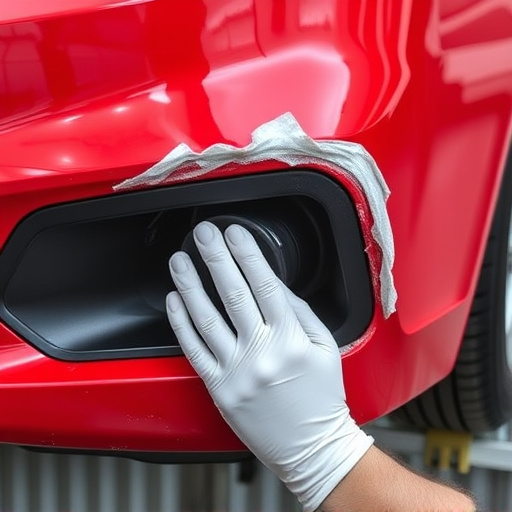Post-Accident Repair: Assessing, Prioritizing, Restoring Timeline

Post-accident repair begins with a comprehensive damage assessment by skilled technicians. This eval…….
In a world where accidents, natural disasters, and man-made crises are an unfortunate reality, the concept of post-accident repair has emerged as a critical component of resilience and recovery. This comprehensive guide delves into the intricate process of restoring environments, communities, and infrastructure after devastating events. Post-accident repair is not merely about fixing what was damaged; it involves strategic planning, coordinated efforts, and innovative solutions to rebuild and strengthen systems for long-term sustainability.
This article aims to provide an in-depth exploration of every facet of post-accident repair, from its foundational elements to cutting-edge technologies and policy implications. By the end, readers will gain a thorough understanding of this dynamic field and its profound impact on shaping resilient societies.
Definition: Post-accident repair, in its essence, refers to the systematic process of assessing, recovering, and rehabilitating areas affected by accidents or disasters. It encompasses a range of activities, from immediate emergency response to long-term infrastructure development and environmental restoration. This holistic approach involves multiple stakeholders, including government agencies, non-profit organizations, community leaders, and specialized contractors.
Core Components:
Emergency Response: The initial phase focuses on containing the damage, ensuring public safety, and providing immediate aid to affected individuals. It includes disaster management strategies, evacuation plans, and medical response coordination.
Assessment and Planning: This crucial step involves a thorough evaluation of the incident’s impact on infrastructure, ecosystems, and communities. Experts conduct site assessments, data analysis, and risk assessments to develop comprehensive repair and recovery plans.
Infrastructure Restoration: Post-accident repair teams work to restore critical infrastructure such as roads, bridges, power lines, water systems, and telecommunications networks. This phase ensures the essential services are rebuilt or repaired to pre-incident levels.
Environmental Remediation: In cases of environmental disasters like oil spills or chemical leaks, specialized teams employ techniques for cleaning up contaminated sites, removing hazardous materials, and restoring natural habitats.
Community Rehabilitation: Beyond physical repairs, this aspect focuses on rebuilding social fabric and economic stability. It involves community engagement, housing reconstruction, business support, and psychological services to aid in the recovery of affected residents.
Historical Context: The concept of post-accident repair has evolved over time, influenced by significant historical events. From the recovery efforts after World War II to the response to natural disasters like Hurricane Katrina and the Deepwater Horizon oil spill, each crisis presented unique challenges that shaped the strategies employed in subsequent repairs. Modern practices benefit from advancements in technology, data analysis, and collaborative planning, enabling more efficient and effective recovery processes.
Post-accident repair is a global endeavor, with every country facing its unique set of challenges. The scale and complexity of these tasks vary significantly across regions, influenced by factors such as economic development, infrastructure preparedness, and environmental conditions. Here’s an overview:
| Region | Challenges | Notable Trends |
|---|---|---|
| North America | Frequent extreme weather events, high population density in coastal areas | Advanced data-driven modeling for predictive maintenance, rapid deployment of temporary infrastructure solutions |
| Europe | Diverse cultural and linguistic barriers, complex regulatory frameworks | Cross-border collaboration for disaster preparedness, integration of renewable energy sources in recovery efforts |
| Asia Pacific | Rapid urbanization, dense populations, limited land availability | Innovative modular construction techniques, use of digital twins for urban planning and recovery |
| Africa | Limited resources, weak infrastructure, political instability | Community-led initiatives, leveraging mobile technology for real-time disaster response coordination |
| Latin America | Economic disparities, uneven access to services, vulnerable coastal communities | Sustainable and resilient urban design, empowering local communities in disaster preparedness |
The economic implications of post-accident repair are far-reaching, with significant market opportunities and challenges. The scale of recovery efforts often translates into substantial investments, creating short-term booms but also demanding long-term financial planning.
Market Dynamics:
Investment Patterns:
Technology plays a pivotal role in modernising post-accident repair practices, enhancing efficiency, safety, and sustainability. Here are some significant advancements:
The complexity of post-accident repair necessitates a robust regulatory framework to ensure safety, environmental protection, and fair practices. Governments worldwide have developed policies and regulations to guide this process, each with its unique approach:
Despite its critical role, post-accident repair faces numerous challenges that hinder effective implementation. Addressing these issues requires collaborative efforts from governments, organisations, and communities.
Main Challenges:
Proposed Solutions:
Real-world examples offer valuable insights into the successful implementation of post-accident repair. These case studies highlight innovative solutions, community engagement, and long-term resilience building.
1. Hurricane Maria Recovery in Puerto Rico:
Following Hurricane Maria, which caused widespread devastation in 2017, Puerto Rico embarked on a massive recovery effort. The government implemented a comprehensive strategy involving:
Lessons Learned: Community engagement is pivotal for successful recovery, ensuring local ownership and fostering resilience. Microgrid technologies can enhance disaster preparedness and provide immediate relief.
2. The 2015 Nepal Earthquake Response:
The April 2015 earthquake in Nepal presented unique challenges due to the country’s rugged terrain and limited infrastructure. The response included:
Lessons Learned: Efficient international aid coordination is crucial in remote or inaccessible regions. Incorporating cultural sensitivity and adopting resilient construction practices enhance long-term recovery outcomes.
The field of post-accident repair continues to evolve, shaped by technological advancements and changing global landscapes. Here are some emerging trends and strategic considerations for the future:
Post-accident repair is not merely about fixing what was broken; it’s about learning from adversity, building back better, and creating more resilient communities and systems. This comprehensive guide has explored the multifaceted nature of this critical field, from its historical roots to emerging technologies and global trends.
As we navigate an increasingly complex world with growing environmental challenges and unpredictable disasters, the role of post-accident repair becomes ever more crucial. By embracing technological advancements, fostering community engagement, and implementing effective policies, societies can become more resilient and better equipped to recover from accidents and disasters. The future of post-accident repair lies in its ability to adapt, innovate, and collaborate on a global scale, ensuring that communities worldwide are built to endure and flourish despite adversity.
Q1: How do I know if my community is prepared for an accident or disaster?
A: Community preparedness involves a combination of resources, planning, and education. Start by assessing your local government’s disaster management plan, which should outline specific roles, evacuation routes, and emergency contact information. Encourage community members to create personal emergency kits, develop family communication plans, and attend training sessions for various types of disasters. Regular drills and exercises further enhance readiness.
Q2: What are the latest technologies used in post-accident repair?
A: Several cutting-edge technologies are revolutionising this field:
Q3: How can I contribute to post-accident repair efforts?
A: Contributions can vary based on individual skills and availability:
Q4: What are some common challenges faced during post-accident repair?
A: Challenges include logistical complexities in remote areas, funding shortages, environmental concerns, language barriers, and a lack of standardised protocols across jurisdictions. Efficient project management, community engagement, data-driven decision-making, and global knowledge sharing can help overcome these hurdles.

Post-accident repair begins with a comprehensive damage assessment by skilled technicians. This eval…….

The digital revolution has transformed post-accident repairs, increasing efficiency and precision wi…….

Post-accident repair is a meticulous process where skilled technicians collaborate with insurers to…….

Post-accident repair services are crucial for safe and comprehensive vehicle restoration after colli…….

Post-accident repair begins with a comprehensive inspection and photo documentation process by skill…….

Post-accident repair services play a vital role in restoring vehicles to their pre-collision conditi…….

After a minor collision, assess damage including dents, scrapes, and auto glass. Common repairs invo…….

The severity of a car accident determines the complexity of post-accident repair, from simple fixes…….

Post-accident repair services are key to transforming damaged vehicles into safe and aesthetically p…….

In dynamic post-accident repair field, technicians need versatile skills and continuous training for…….